- Events & Programs Home
- Calendar
- Accessibility
- Adults
-
Families & Teens
- Families & Teens Home
- 10x10 Teen Art Expo
- Art on the Rise
- Art Together: Art Making for Families with Children Ages 3–5
- Babies Sing with May Festival Minis
- Boy Scouts / Girl Scouts
- CAM Kids Day
- Family Storytime and Gallery Walk
- Family Studio: Art Making for Families with Children Ages 6–12
- Games in the Galleries
- Members-Only Baby Tours
- Public Baby Tours
- REC Reads
- Rosenthal Education Center (REC)
- Saturday Morning Art Class
- See Play Learn Kits
- Summer Camp
- Teen Fest: Zine and Comic Exchange
- RECreate
- Teachers
- Community Outreach
- Fundraisers
- Plan Your Own Event

- Events & Programs Home
- Calendar
- Accessibility
- Adults
-
Families & Teens
- Families & Teens Home
- 10x10 Teen Art Expo
- Art on the Rise
- Art Together: Art Making for Families with Children Ages 3–5
- Babies Sing with May Festival Minis
- Boy Scouts / Girl Scouts
- CAM Kids Day
- Family Storytime and Gallery Walk
- Family Studio: Art Making for Families with Children Ages 6–12
- Games in the Galleries
- Members-Only Baby Tours
- Public Baby Tours
- REC Reads
- Rosenthal Education Center (REC)
- Saturday Morning Art Class
- See Play Learn Kits
- Summer Camp
- Teen Fest: Zine and Comic Exchange
- RECreate
- Teachers
- Community Outreach
- Fundraisers
- Plan Your Own Event
Blog: CAM Uncovered
Blog: CAM Uncovered
- Home
- Plan Your Visit
- Art
-
Events & Programs
- Events & Programs Home
- Calendar
- Accessibility
- Adults
-
Families & Teens
- Families & Teens Home
- 10x10 Teen Art Expo
- Art on the Rise
- Art Together: Art Making for Families with Children Ages 3–5
- Babies Sing with May Festival Minis
- Boy Scouts / Girl Scouts
- CAM Kids Day
- Family Storytime and Gallery Walk
- Family Studio: Art Making for Families with Children Ages 6–12
- Games in the Galleries
- Members-Only Baby Tours
- Public Baby Tours
- REC Reads
- Rosenthal Education Center (REC)
- Saturday Morning Art Class
- See Play Learn Kits
- Summer Camp
- Teen Fest: Zine and Comic Exchange
- RECreate
- Teachers
- Community Outreach
- Fundraisers
- Plan Your Own Event
- Give & Join
- About
- Tickets
- Calendar
- Exhibitions
- Collections
- Blog
- Shop
Photographs from the Collection: Looking At Animals
by Nathaniel M. Stein, Curator of Photography
4/11/2023
photography , collect , animals , Curatorial Blog
From April 11–August 10, 2023, the hallway gallery at the top of the museum’s Great Hall staircase (Gallery 213) will be full of critters.
Don’t worry, it’s not time to call animal control. The furry, feathery invasion is all part of a special feature exhibition drawn from the museum’s rich photography collection and interpreted especially for families and kids. Below, you can explore a selection of the themes addressed in the exhibition and some of the artworks on view, from wherever you are.
Hold Still!
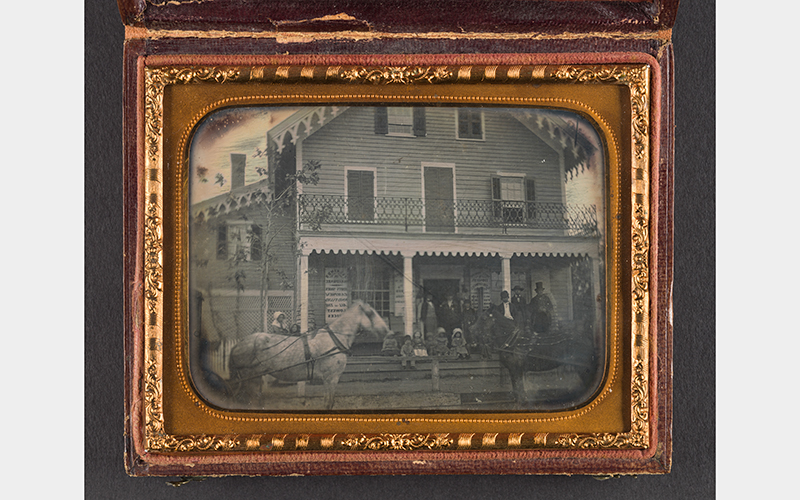
Unidentified Artist (American, 19th century), Group Portrait Outside the General Store, Sewell, New Jersey, early 1850s, daguerreotype, Museum Purchase: FotoFocus Art Purchase Fund, 2017.50
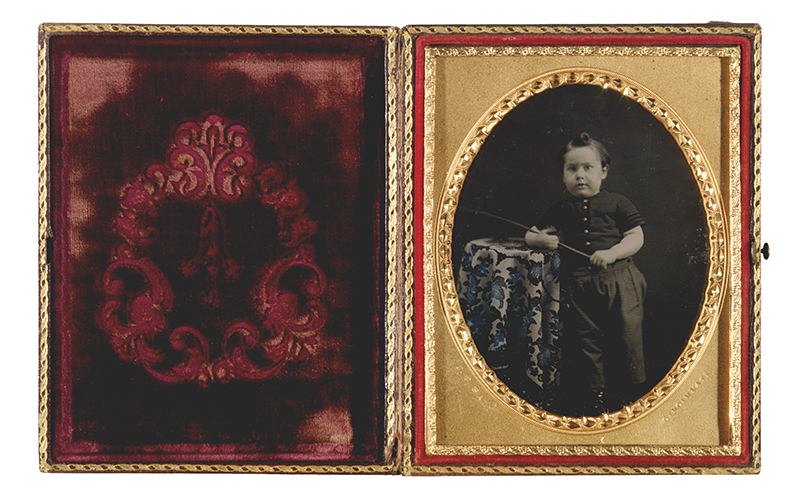
James Presley Ball (American, 1825–1904), Boy with Riding Crop, 1848–1852, daguerreotype with applied color, Museum Purchase with funds provided by Carl Jacobs, 2005.736
In the early days of photography, taking pictures of animals was hard because it took many seconds to make a clear, well-exposed picture. Most animals don’t hold still long enough to have their portrait made! But animals aren’t always pictured for their own sake. Sometimes people are more interested in what others think of them based on how they use animals for learning, work, or play. Early photographers could use props—like a horseback riding crop—as clues to show a person’s relationship with non-human creatures…without dealing with a fidgety living animal.
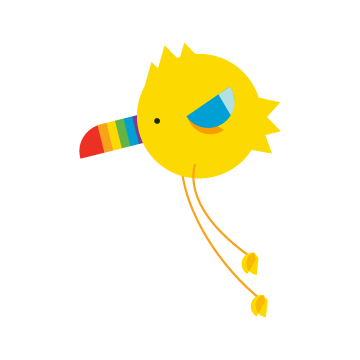 What do you think the animal clues in these very old photographs say about the people in the pictures?
What do you think the animal clues in these very old photographs say about the people in the pictures?
Best Friends
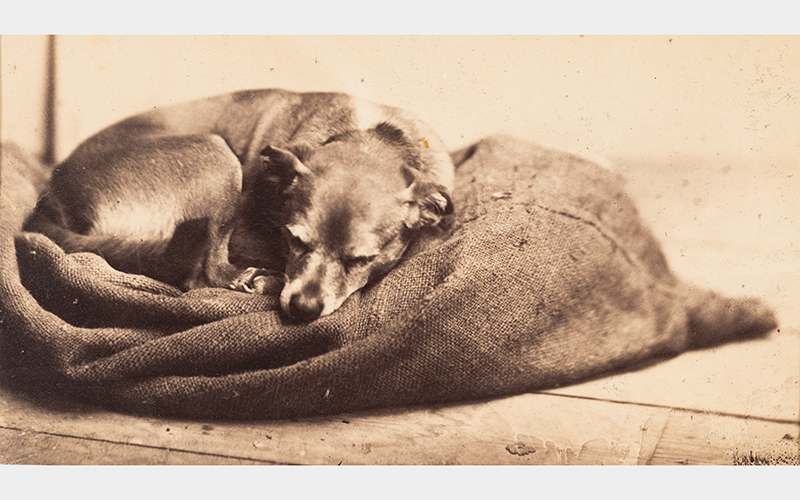
Edmond Lebel (French, 1834–1908), The Artist’s Sleeping Dog, circa 1863–1870, albumen silver print, Museum Purchase: FotoFocus Art Purchase Fund, 2017.49
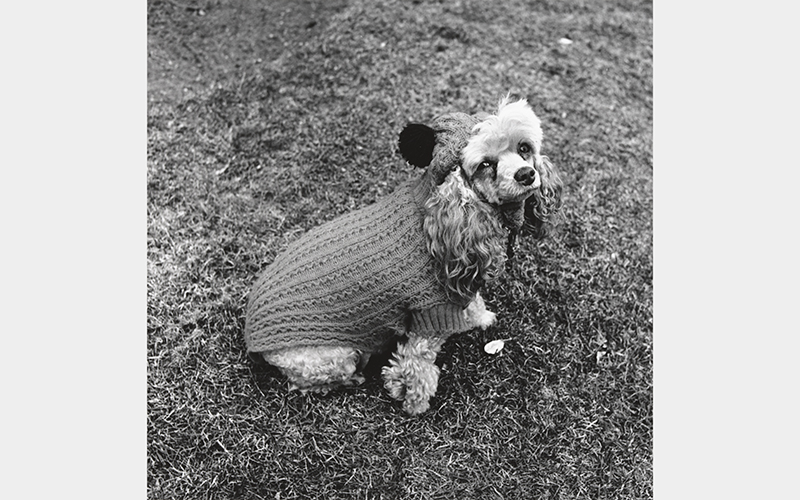
Henry Horenstein (American, b. 1947), Chammie in Wool, Backyard, Newton, MA, 1972, gelatin silver print, Gift of Dr. and Mrs. William Tsiaras, 2018.165
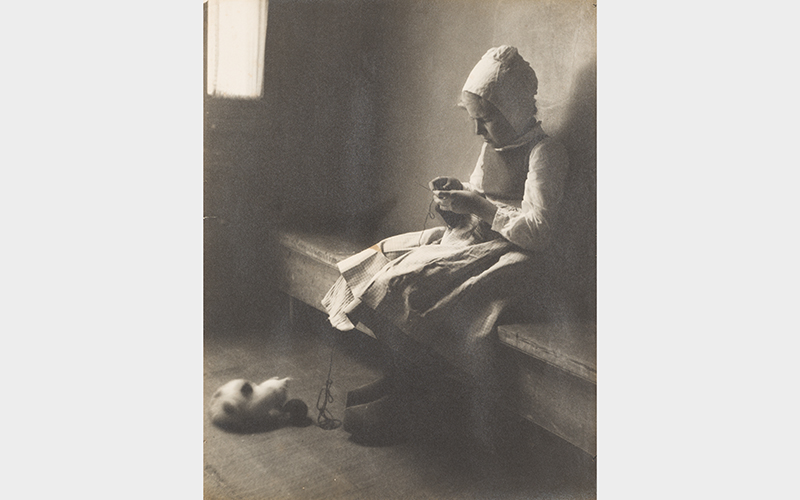
Nancy Ford Cones (American, 1869–1962), Knitting with a Kitten Nearby, 1907, gelatin silver print, Gift of Timothy A. Fischer, 1995.146
Many pictures of animals represent human feelings and the values we attach to qualities such as composure, playfulness, loyalty, or independence. All the animals pictured above have a relationship with the photographer taking their picture. They are family pets, and sometimes even frequent models for their artist-owners. Can you tell that the photographer feels a special connection to their subject? Do you see those feelings returned by the animal?
 Do you take pictures of your pet? How do those photographs show how you and your furry (or feathery, or scaly) friend feel about each other?
Do you take pictures of your pet? How do those photographs show how you and your furry (or feathery, or scaly) friend feel about each other?
A Bird in Hand
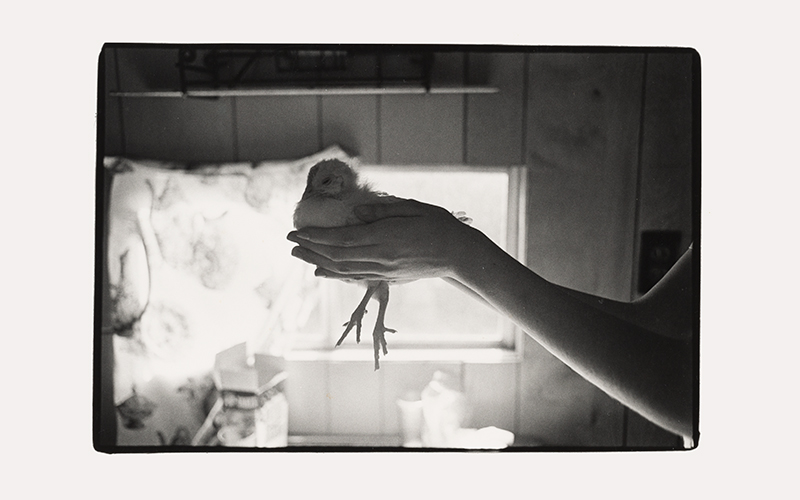
Nancy Rexroth (American, b. 1946), Reva Holds a Chicken, Pomeroy, Ohio, 1970, gelatin silver print, The Nancy Rexroth Collection: Museum Purchase with funds provided by the Carl Jacobs Foundation, 2019.15
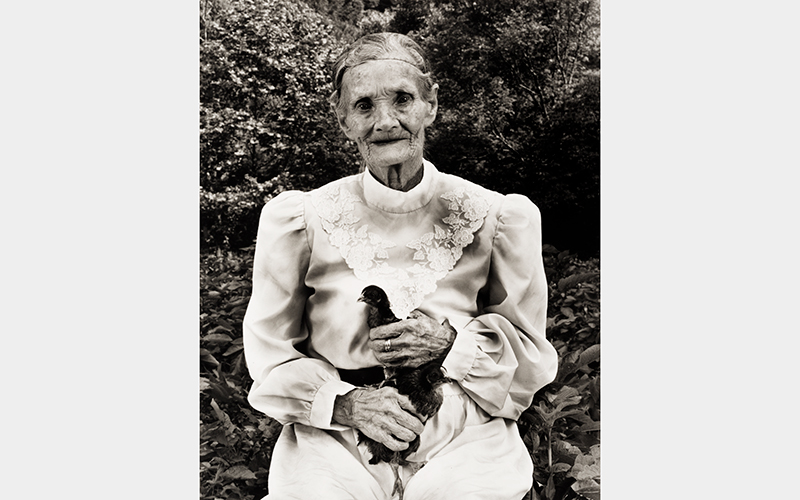
Shelby Lee Adams (American, b. 1950), Jane with Diddles, 1994, gelatin silver print, Gift of Foto Collectors Construct, 1999.777
The saying “a bird in the hand is worth two in the bush” means that we should appreciate what we already have rather than risk losing it by trying to get something better. One way to understand the saying is that a bird is hard to catch and essential to keep—it can provide food, but it can also fly away. Another way to think about what it means to hold a bird is that birds are fragile. Holding one requires firmness, determination, and gentleness. What do you think these photographers are trying to say by focusing on a human cradling a bird?
 Lots of photographers love animals, but is photography vegan? Yikes, not always!
Lots of photographers love animals, but is photography vegan? Yikes, not always!
The most common way to make a photographic print from the 1860s to the late 1890s—albumen silver printing—used egg whites to hold light-sensitive silver particles to a piece of paper. (Thank you, chickens.) Gelatin silver printing became the most common way to make photographs in the 1900s. Gelatin comes from parts of animals that people prefer not to eat!
All About Us
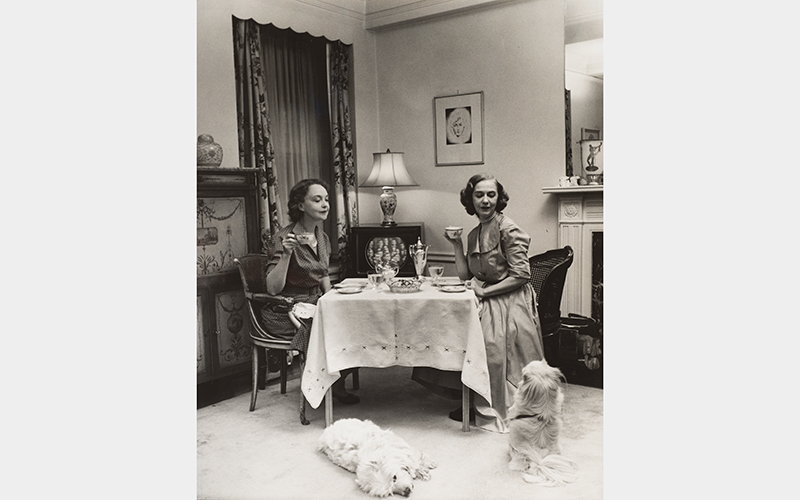
Nina Leen (American, 1909–1995), Gish Sisters Having Tea, 1951, gelatin silver print, Bequest of Carl M. Jacobs III, 2009.265

Raghu Rai (Indian, b.1942), Among the Sparrows, 1968, gelatin silver print, Museum Purchase: Carl and Alice Bimel Endowment for Asian Art, 2018.107
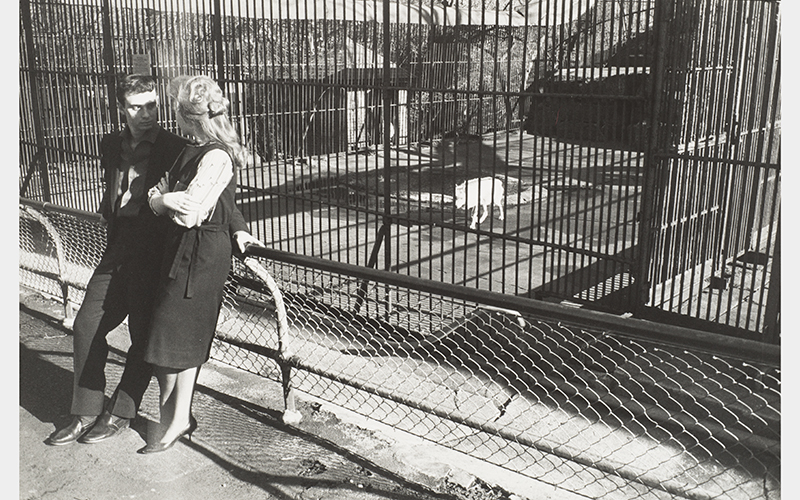
Garry Winogrand (American, 1928–1984), Central Park Zoo, New York City, 1962, gelatin silver print, Bequest of Carl M. Jacobs III, 2009.154
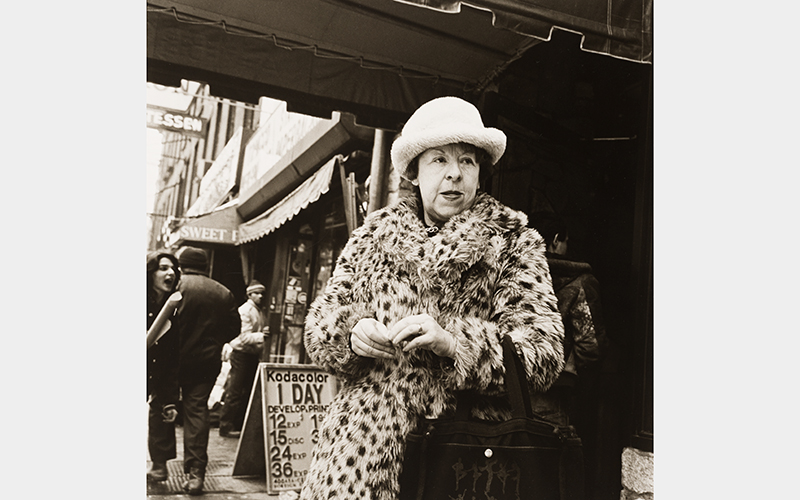
Roy Colmer (American, 1935–2014), Woman in Imitation Leopard Skin Coat, 1984, gelatin silver print, Gift of the Artist, 1988.189
Artists often use animals to raise questions or make observations about human behaviors, relationships, and activities. While many artists are concerned with the beauty and visual sophistication of their photographs, their pictures can also tell us about human social structures in different environments. Raghu Rai’s image of a raven and sparrows is the photographer’s metaphor for divisiveness and social inequality. What do you think the other artists whose pictures are shown above thought about their subjects?
 Can you find another picture in the museum’s collection that uses an animal to symbolize a person’s attitudes, human relationships, or social activities? Can you think up your own?
Can you find another picture in the museum’s collection that uses an animal to symbolize a person’s attitudes, human relationships, or social activities? Can you think up your own?
Cincinnati, OH 45202
Toll Free: 1 (877) 472-4226
Museum Hours
Museum Shop
Terrace Café
Library
Cincinnati Art Museum is supported by the tens of thousands of people who give generously to the annual ArtsWave Campaign, the region's primary source for arts funding.

Free general admission to the Cincinnati Art Museum is made possible by a gift from the Rosenthal Family Foundation. Exhibition pricing may vary. Parking at the Cincinnati Art Museum is free.
Generous support for our extended Thursday hours is provided by Art Bridges Foundation’s Access for All program.

General operating support provided by:



